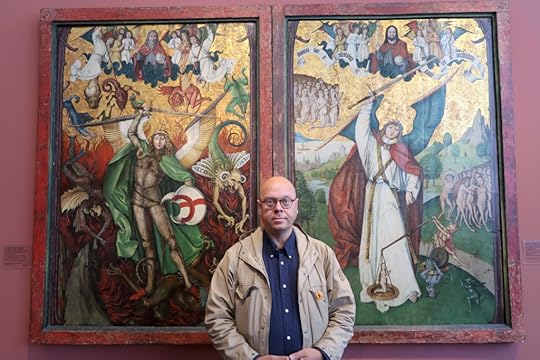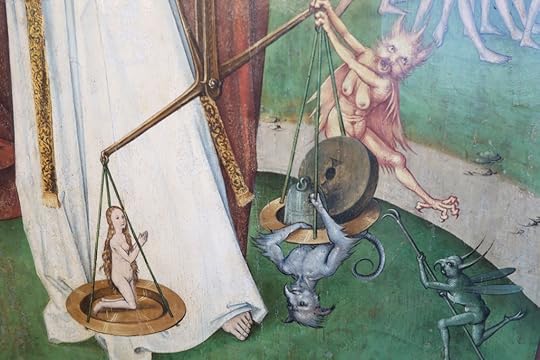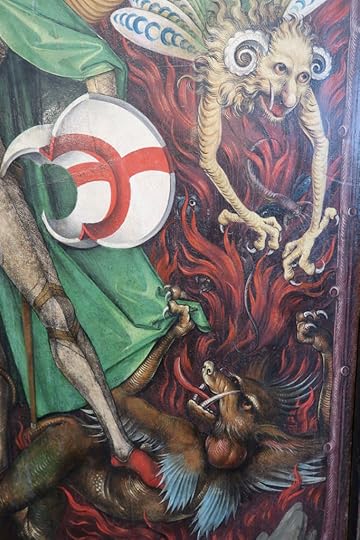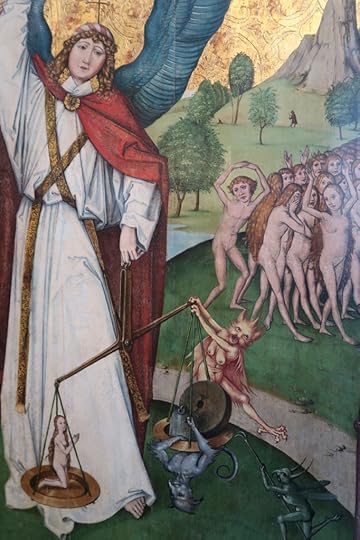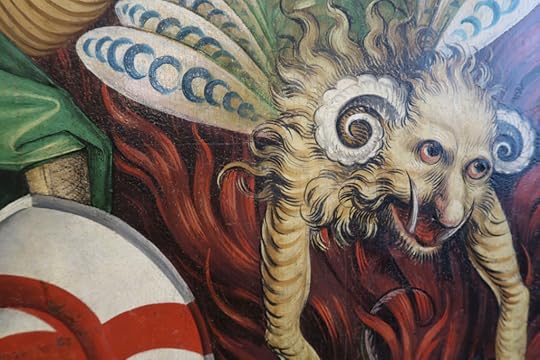St Michael Lost It
In the beautiful collections of Kunsthaus Zürich rests a powerful four panel painting depicting St Michael’s futile attempts at conquering Lucifer. It’s an exquisite piece of work dating back to 1490, and painted by Hans Leu the older (1460-1507). Its contour-driven style in many ways precedes a cartoonish-like esthetic that fits the theme like hand in glove.
The remarkable thing here is the apparent upper hand of Lucifer and his minions. They’re fun, seem pretty relaxed despite Mike’s aggressions, and definitely evoke a sense of sympathy rather than disgust.
However, this is our own interpretation today. Back in 1490, it may well have been a different story; the archangel was perhaps interpreted as the demagogically desired; as a righteous victor over the forces of ”evil.” Or… perhaps the noble artist actually knew exactly what he was doing when displaying these demons in such a fantastic way. Only the most retarded could ever interpret them as ”evil” or terrifying.
The theme itself is one of the most regurgitated in Christian mythological iconography, and this particular execution is without a doubt a genuine masterpiece. Not only stylistically but also because of this ambivalence of allegiance. St Michael resembles an anxious hysteric more than an angelic-heroic force. His heavenly partners look as if they’re cloned from the same source; they look considerably more like effeminate crossdressers than arbiters of divine justice.
Christ himself looks like a bloated heavy metal singer, whereas God on another panel looks devoid of consciousness altogether. It’s as if Master Leu focused all the intricate details on the infernals. They’re endowed with wings, fangs, horns, feathers, colors, a sense of humor and intelligence and, most of all, an attitude of absolute ”non serviam.”
Judging from our contemporary perspective of esthetics and visual semiotics, Leu’s masterpiece is undoubtedly a big win for Lucifer. The traditionalism of the iconographic structure is simply not enough to convey a sense of victory for the angelic forces.
I strongly suspect the situation was the same in the late 15th century. Leu got away with it simply because he adhered to a form so well-known that no-one could really argue about the strangeness of these vital devils. If people were terrified of his cartoonish monsters it sort of served them right. However, I believe that intelligent and cultured people at the time actually did find them highly amusing, and that these people admired Leu for his audacity in creating a necessary paradigm shift of power through wonderfully subtle ways and methods.

